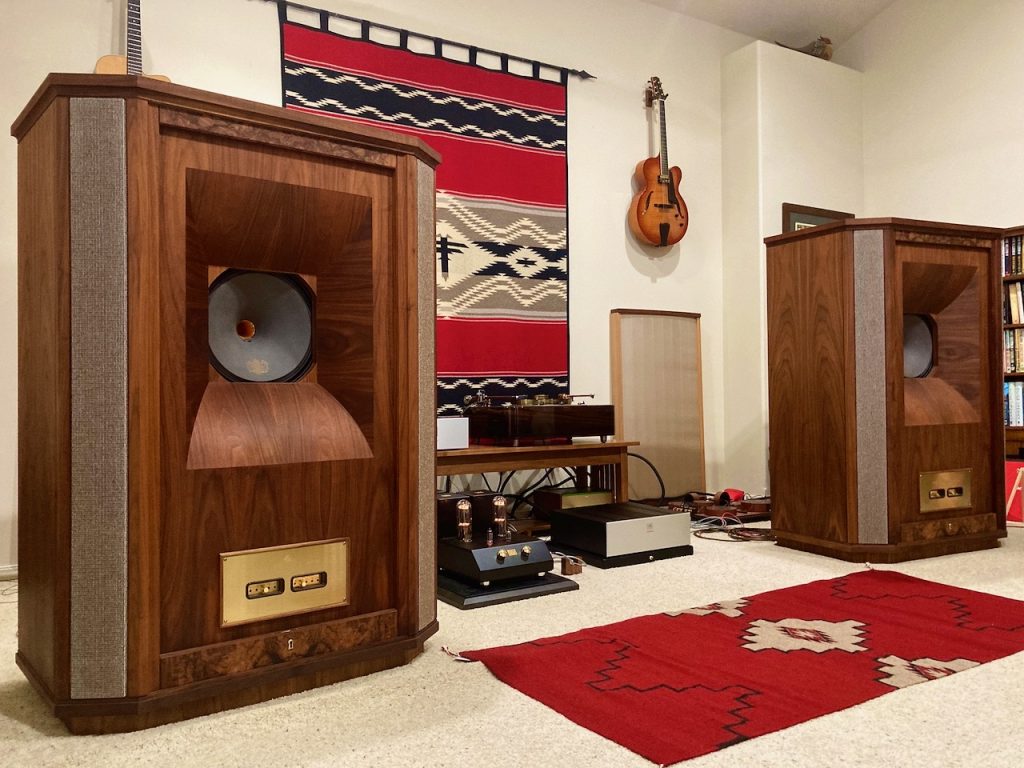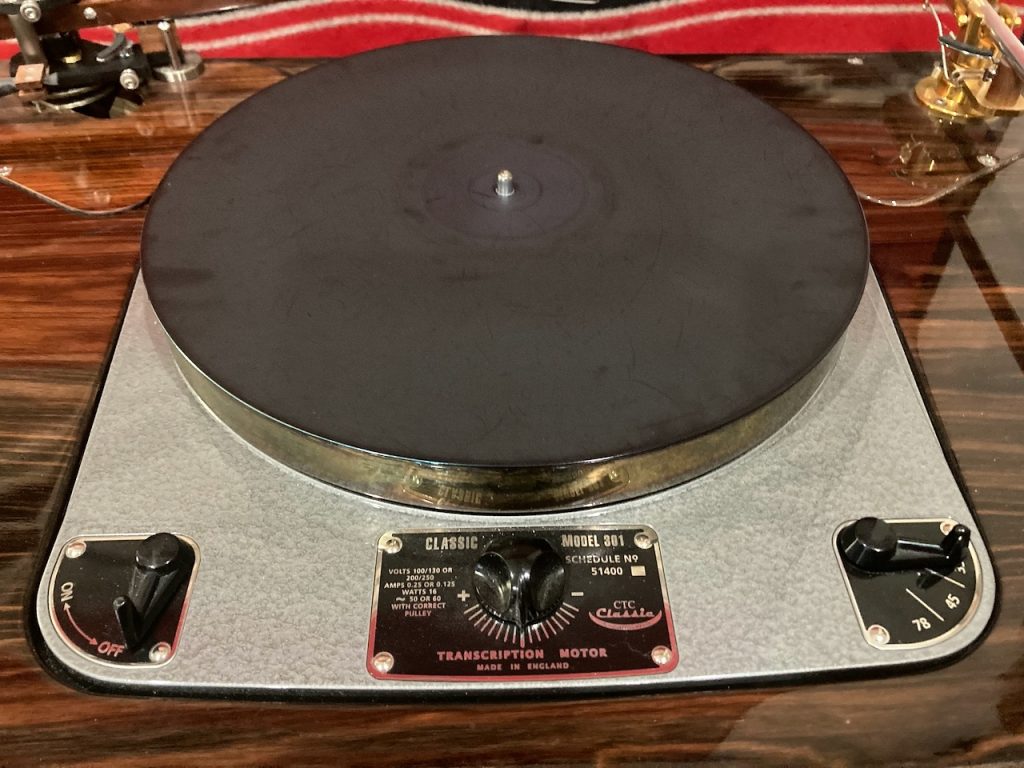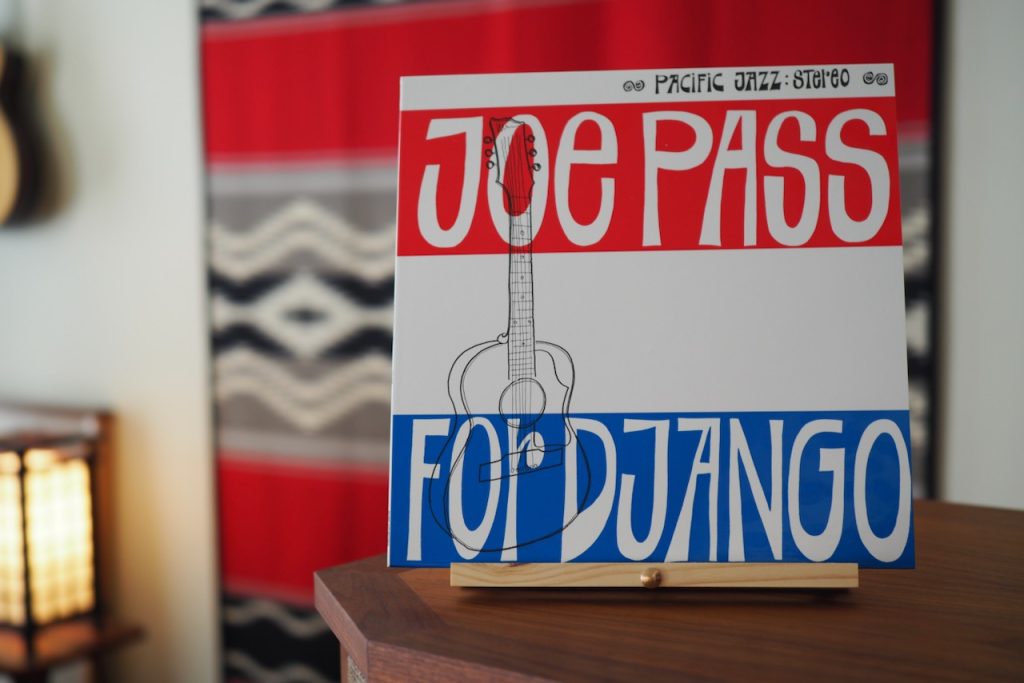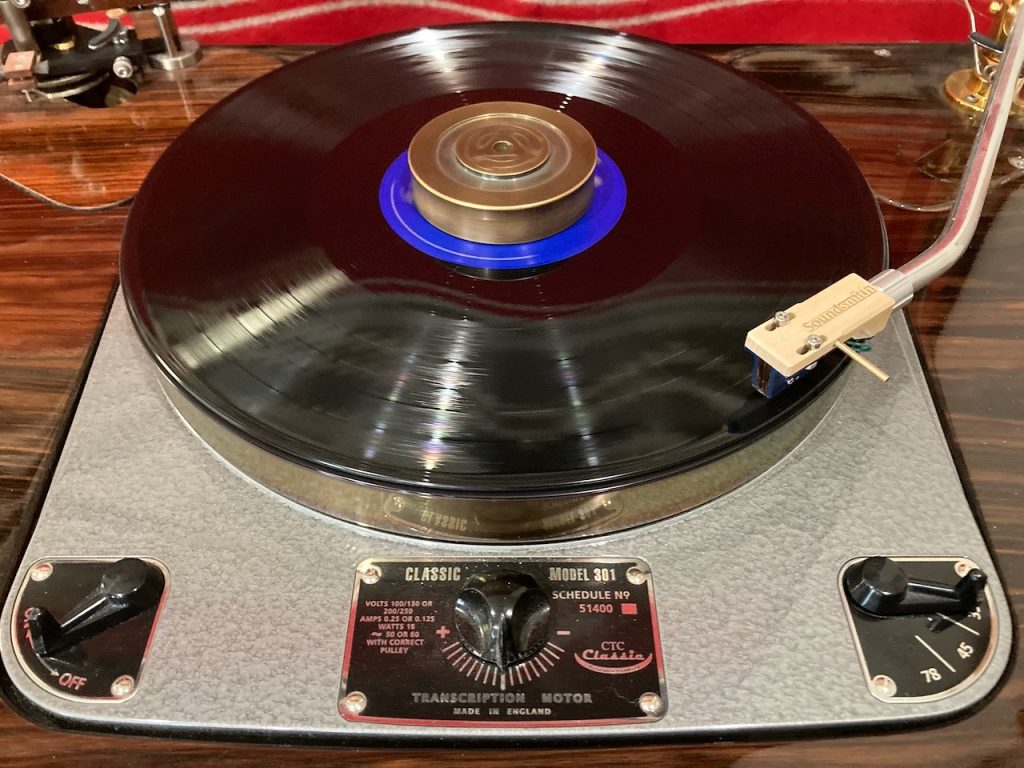Greetings friends, I hope you are well!
For today's First Listen to the Acoustic Revive RTS-30 turntable mat, here's the system components of the moment:
The Audio Note (UK) combination of the Io I moving-coil cartridge (mounted on the Schick tonearm of my CTC Garrard 301 turntable), AN-S4/L silver SUT, AN-V silver interconnects, M3 RIAA phono stage (in for review), Tomei 211 SET integrated amp (in for review), AN-SPe silver speaker cables, and my Tannoy Westminster Royal SE loudspeakers with their outboard Duelund CAST crossovers.
As you might suspect, this drool worthy combination of components is sounding mighty fine, and the resulting lofty level of high-fidelity playback is an ideal context to do a little listening to the Acoustic Revive RTS-30 turntable mat (¥38,000 / $256.65 USD) that is in for review.
You might be surprised to find out that turntable mats can make a rather significant difference to playback quality, in the same sorts of ways that different brands of vacuum tubes can.
Turntable mats can provide a differing overall tonal voicing, emotional feel, resolution, and portrayal of visuospatial properties, for example.
Quite a few audio nuts have multiple turntable mats that we alternate between as favorites for the different kinds of music we are listening to.
To continue the vacuum tube analogy, maybe we want that sweet Mullard midrange warmth and silky highs for an audio system or album that is a little forward or bright sounding. Or maybe we want that Telefunken tight bass, natural midrange, incredible soundstage, and extended airy highs for a more neutral / natural sounding audio system or album.
Whatever your personal tastes or system voicing needs are, there's likely a turntable mat for you with a voicing that will be complementary.
I've gone through quite a number of turntable mats over the years, and the one I preferred with my CTC Garrard 301 & Thorens TD 124 turntables was the Spec AP-UD1 turntable mat (currently around $350 USD, I believe).
I don't think one could find two more different design approaches to turntable mats than the Spec AP-UD1 and the Acoustic Revive RTS-30.
The Spec AP-UD1 is a lacquered metal disc that is about the thickness of a credit card, and has been sandblasted to give it a velvety matte finish. The AP-UD1 on my 301 is a little battle worn with scuffs & smudges here and there from a lot of use, and its diameter completely covers the Classic Turntable Company oversize high-mass brass platter I use on my 301 (HERE).
According to the Spec website, "This is the lacquer disk that is used as an original disk to produce a record, also known as vinyl, from a two-track tape. This original disk is used for cutting grooves on a record from a vinyl-pressing machine."
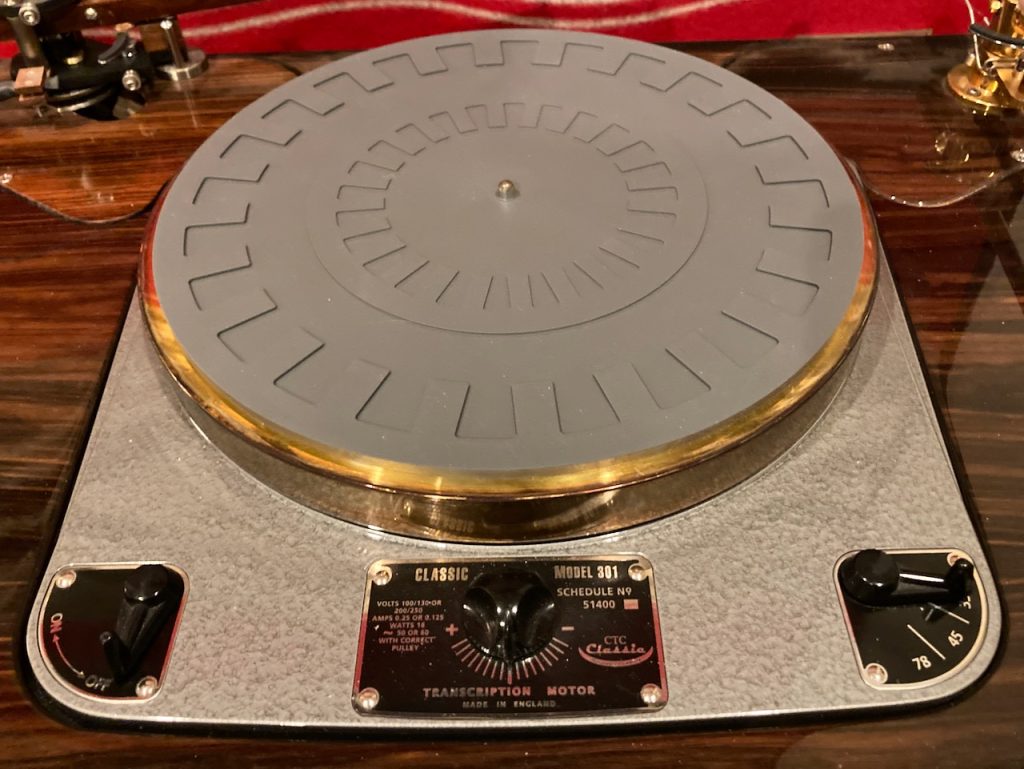
Acoustic Revive RTS-30 turntable mat on the oversize brass platter of my Classic Turntable Company Garrard 301.
The Acoustic Revive RTS-30 is a thicker - about 3/16 of an inch - silicon style of mat that is embedded with a blend of natural ores, and is cast with a geometric pattern for 'optimal' vibration damping.
The RTS-30 is an attractive gray color that nicely complements the Hammertone finish on my CTC Garrard 301, and leaves just a touch of the top of my oversize brass platter exposed as an attractive flirt.
To quote the Acoustic Revive website description of the RTS-30:
"It is a turntable sheet with natural ores such as Guiyang stone and tourmaline immersed in a special vibration damping material. By engraving geometric grooves on silicon-based vibration damping materials with excellent vibration damping properties, they effectively absorb and eliminate external vibrations such as vibrations and speakers transmitted from the motor of analog players."
"In addition, the blending of natural ores generates strong negative ions, so it prevents the generation of static electricity during record playback, and as a result of exerting the surface activation effect on the record board, the S/N ratio is overwhelmingly improved, and it is freshly full of energy. It realizes smooth tone and texture, realistic and vivid three-dimensional sound image localization."
My jazz guitarist buddy David Gitlen stopped by for a little jazz listening session, and we listened to both the Spec AP-UD1 and the Acoustic Revive RTS-30 while playing the Joe Pass For Django LP from the Blue Note 'Tone Poet' reissue series.
For Django is a fantastic album, and is probably my favorite of my many beloved albums featuring Joe Pass.
Joe is playing his Gibson ES-175 on this early album, and it sounds beautiful tonally. The ES-175 was arguably the most influential jazz guitar of all time, and in the hands of Joe Pass it was capable of true magic.
With the Spec AP-UD1 the sound of Joe's guitar was tonally beautiful, dynamic, full of nuance (impressive resolution), and the artistry of the playing was of course, jaw dropping. Colin's drum work was articulate, complemented the guitars, and sounded utterly natural. Jim's bass sounded taut, with distinct pitch definition, and moved the music along nicely.
From a visuospatial perspective the imaging was superb, and while this was a studio recording (Pacific Jazz Studios in Hollywood), the instruments were artfully arrayed upon a big billowing studio 'soundstage'.
By the way, the record weight you see in the photos is the Fern & Roby brass record weight (630 grams) that I bought quite some time ago, and which I really like a lot.
The sound quality of For Django was slightly 'softer' overall with the Acoustic Revive RTS-30 turntable mat, with slightly less resolution, the dynamics a little less dramatic, and the images were less bold (less body) in the way they are depicted on the soundstage.
The Acoustic Revive RTS-30 turntable mat is a little more laid back sounding, with a natural sounding tonality and a charming, more polite, and elegant presentation. The RTS-30 seemed more balanced across the audio spectrum from the midrange on up to the brilliance region, than the Spec AP-UD1, but was slightly more boomy sounding in the bass region.
The Acoustic Revive RTS-30 is a little more natural sounding, like you might hear at a jazz club, with the images being a little more recessed into the soundstage. From a visuospatial perspective the RTS-30 has a nice wide and deep soundstage, with a noticeable sense of spaciousness to it.
To sum up my First Listen impressions on For Django:
The Spec AP-UD1 sounds big, bold, and dynamic, with the instruments leaping out of the soundstage in a very dramatic and authoritative fashion. The music sounds louder at the same volume setting with the Spec mat compared to the Acoustic Revive RTS-30 mat.
From a visuospatial perspective, the images are so intense with the Spec AP-UD1 mat that they almost compete with each other for attention, and there is less of a sense spaciousness within the soundstage.
The soundstage is equally wide compared to the Acoustic Revive RTS-30, but the Spec AP-UD1 images are more forward, closer to the listener, and the images have so much presence and body that the soundstage almost feels crowded.
With the Spec AP-UD1 it's obvious that For Django is a studio recording, and it recovers more information from the LP, giving a lot of "Wow!" moments.
The Spec has an intense portrayal of tone color, almost oversaturated, and is so dramatic in its presentation on For Django that it's kind of spooky to listen to, almost in a 'fight or flight' sort of way, which definitely kept me on the edge of my seat while listening.
The Acoustic Revive RTS-30 sounds more suave, with a charming, gentler, and more natural sounding presentation of For Django.
The RTS-30 is more relaxing to listen to, more like a late night jazz club sound, which I found appealing, and I preferred its presentation to the high-drama impact of the Spec mat on For Django.
The Acoustic Revive RTS-30 has an equally wide, but more recessed soundstage than the Spec mat, with the images coming across as more naturally positioned on the soundstage, and with a more open natural sounding spaciousness connecting them.
The RTS-30 makes For Django sound more like a live performance than a studio recording, which I found interesting, given it is a studio recording.
As a counterpoint, David and I listened to the live recording of Jim Hall (guitar) and Red Mitchell (bass) that was recorded at Sweet Basil in New York City in January of 1978 (Artists House AH 5).
David was present at Sweet Basil for these performances and recordings, so he really knows what Jim and Red sounded like during those performances.
I always listen carefully to David's perceptions, because David hears more in the music, the recordings, and the hi-fi kit than anyone I've ever met - he's a remarkable jazz guitarist and a remarkable listener too.
Jim Hall played with a light and articulate touch on the strings, and let his amp do the volume work at Sweet Basil.
David pointed out how with the Spec AP-UD1 you could hear Jim's playing from both the guitar and the amp on this nicely recorded live album. The unamplified sound of the guitar came through clearly, as did the slightly distorted sound of Jim's Gibson GA-50 amp. That distinction between the guitar and the amp was less obvious with the Acoustic Revive RTS-30 mat.
David preferred the Spec AP-UD1 to the Acoustic Revive RTS-30 mat on this album, and thought it sounded more like the live performances he heard.
What do all those listening impressions mean?
Well for one, I think the Spec AP-UD1 mat will match those audio systems better that are more laid back sounding. It will wake them up and make them sound more dramatic and involving.
I think the Acoustic Revive RTS-30 mat will be a better match to those audio systems that are a little leaner and more forward sounding, and it will help them sound more musically natural and satisfying to listen to music on.
Then there's the other obvious conclusion: I found it nice to have access to both of these perfectionist turntable mats.
On the For Django studio album I found the Spec AP-UD1 to be so dramatic and bold that it was a little unnerving. I much preferred the more suave, easy going, and natural sounding Acoustic Revive RTS-30 mat's presentation on For Django.
On the live recording of Jim Hall & Red Mitchell I thought the Spec AP-UD1 mat was preferable, and according to David, much closer to the sound of the live performances he heard back in January of 1978.
The Acoustic Revive RTS-30 proved to be a little too laid back with Jim's light touch on the strings, whereas the Spec AP-UD1 mat nailed the sound of the live performances better.
I'll be listening to the Acoustic Revive RTS-30 and the Spec AP-UD1 turntable mats over the coming months, and I'll keep you posted on any new listening observations that reveal other aspects of these mats performance.
If you've never had the pleasure of experiencing one of these sorts of perfectionist mats on your turntable, you're in for a nice surprise. They can make a rather remarkable difference in performance.
Which one should you get? Both of course. Double the fun!
As always, thanks for stopping by, and may the tone be with you!





